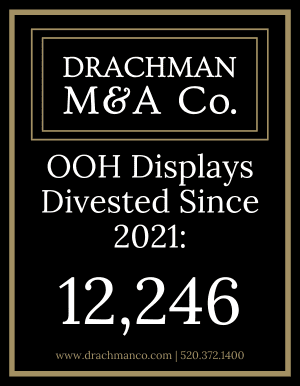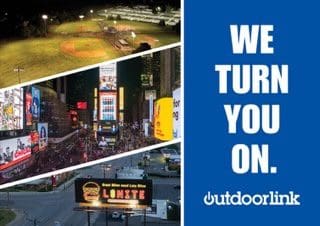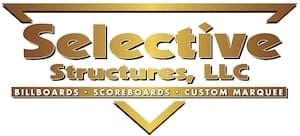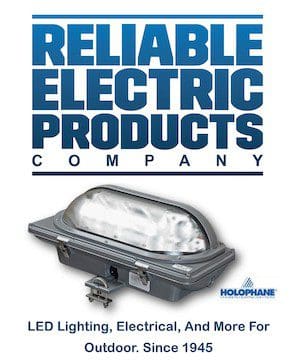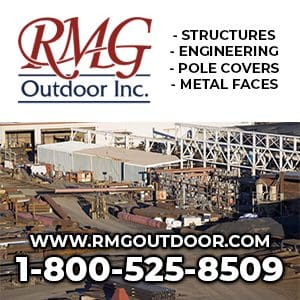Hurricanes and windstorms can damage billboards. This can create legal issues, especially if you want to rebuild a non-conforming sign which has been damaged by hurricane. City of Webster v SignAd is a legal case in which an out of home advertising company successfully contested a city’s efforts to prevent non-conforming billboards from being rebuilt after a hurricane. Insider notes that Richard Rothfelder successfully represented the out of home advertising company in this case.
 By Richard Rothfelder, Rothfelder and Falick.
By Richard Rothfelder, Rothfelder and Falick.
Introduction
SignAd, Inc. (“SignAd”) sued the City of Webster (“the City”) when the City refused to let SignAd repair six billboard signs that were damaged by a hurricane. The City argued that a section of the Webster City Code of Ordinance (“the City Ordinance”) prohibited reconstruction of a sign if “substantial parts” of the sign were destroyed. The district court found that the City Ordinance was vague and failed to give fair and adequate notice of what is permitted or prohibited, and therefore ruled that the City Ordinance was unconstitutional and void. The City appealed to the Texas Court of Appeals- Houston (1st District), which affirmed the judgment of the district court.
Summary
- SignAd owned numerous billboard signs within the jurisdiction of the City, all of which were erected prior to the City passing a sign ordinance that prohibited the construction of new billboards within the City. SignAd’s signs were considered to be non-conforming signs, but were permitted under the ordinance’s grandfather clause.
- On August 18, 1983, Hurricane Alicia hit the City and damaged SignAd’s signs. The damage to the signs varied, from just a panel blown off, to the entire sign knocked over.
 SignAd learned that a permit was required to repair the signs and submitted a request to the City Engineer. The City Engineer responded that repair of the signs was forbidden because the hurricane had blown down or destroyed “substantial parts” of the signs. The City Engineer then denied the repair permit requests, and ordered the signs to be removed.
SignAd learned that a permit was required to repair the signs and submitted a request to the City Engineer. The City Engineer responded that repair of the signs was forbidden because the hurricane had blown down or destroyed “substantial parts” of the signs. The City Engineer then denied the repair permit requests, and ordered the signs to be removed.- The City Engineer quoted the Building Regulations of the Webster City Code of Ordinances Chapter 3, Section 10 H(2) and D(2). Section D(2) “forbids the construction or emplacement of new billboards within the city.” The relevant portion of Section H(2) states that “When any outdoor advertising sign, billboard, spectacular sign, business sign, or business directory sign which would be unlawful or non-conforming hereunder, but for the fact that such sign was lawfully in existence on the date of passage of this section, or any substantial parts thereof is blown down or destroyed or taken down or removed for any purpose other than routine maintenance operations or for changing the lettering, symbols, or other matter on such signs, it shall not be re-erected, reconstructed, rebuilt, or relocated except in conformity with the provisions of this section.” (Emphasis added). No comparison of repair and replacement costs, or any other objective tests to define “substantial” damage was contained in the ordinance.
- The district court granted SignAd’s motion for summary judgment, finding that “The terms ‘substantial parts thereof’ contained in the last sentence of Section H(2) … violates the due process provisions of the Texas and United States Constitutions because such terms are so vague that they fail to give fair and adequate notice of what is permitted or prohibited, and they necessitate the use of unbridled discretion of the Webster City Engineer in interpretation and application.” The City appealed.
- The appellate court found that the words “substantial parts” were not “per se explanatory or descriptive in a due process sense” just because they are terms of common speech. The court further explained that, without any definition, parts of a sign could be “substantial” and “insubstantial” at the same time “depending on whether the test used is economic, physical or functional.”
- The court ultimately ruled that the final sentence of Section H(2) was invalid because “persons of common intelligence are left to guess at the meaning of that portion of the Ordinance.” Because the City’s actions were based on an invalid section of the City Ordinance their actions were void and unenforceable, and the legal basis for prohibiting SignAd’s repair of the signs was unsound.
Rothfelder’s Take:
If a city ordinance does not clearly define the restrictions on repairs of signs or sign parts, or establish an objective way to measure damage to a sign or sign parts, a court is likely to find that the city ordinance is unconstitutional because it is too vague. However, exercise caution when conducting repairs on signs or sign parts that are damaged. Always be cognizant of applicable repair restrictions and requirements. Additionally, if a city has passed a regulation that prohibits construction of new signs, be sure to carefully review the “grandfather” clause and how damage would affect the status of the existing signs. Finally, be sure to keep careful record of any damage or repairs that are done to a sign or sign parts.
[wpforms id=”9787″]
Paid Advertisement
